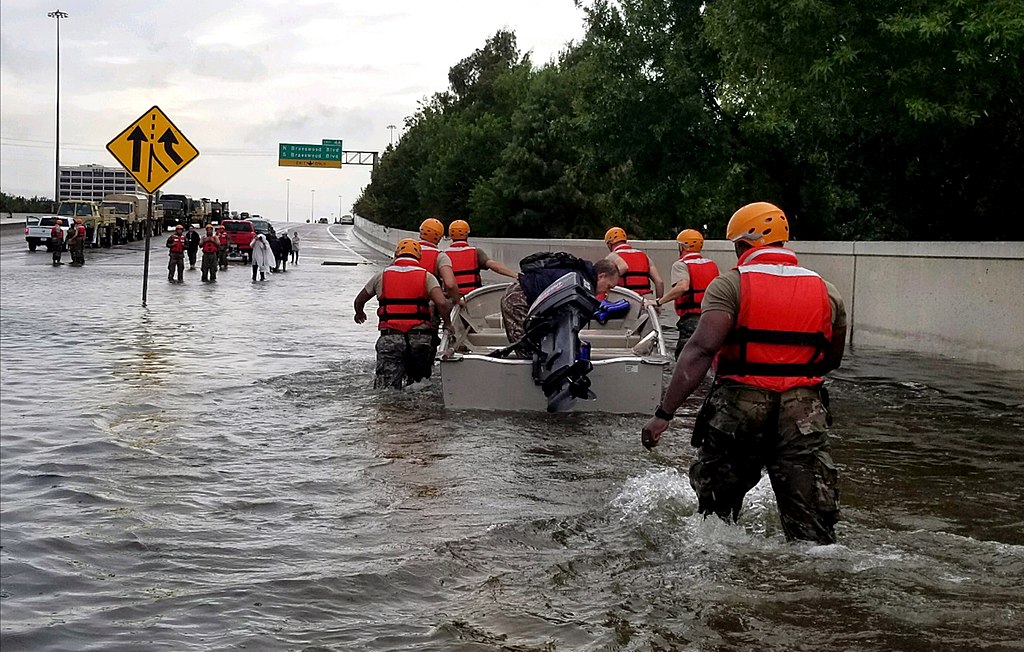Hurricane Harvey caused widespread damage to homes, businesses, and infrastructure, as well as injury and loss of life, in Texas and Louisiana. The storm brought heavy rainfall and flooding worse than any the Houston area has seen before.
The storm is also affecting U.S. energy markets, causing prices to rise across the nation.
An Energy Hub Shut Down
The area hit by Harvey is an important U.S. energy hotspot. In fact, it could be called the largest energy hub in the country. The five biggest oil refineries in the U.S. are located on the Gulf Coast of Texas and Louisiana. The area also has both onshore and offshore oil production and serves as an important oil storage location. The Gulf Coast is also a key spot for importing and exporting oil products.
The storm caused refineries with a total capacity of more than 2 million barrels of oil per day (b/d) to close their doors. It will be difficult to assess until the water is gone, but flooding, heavy rain, and high winds caused some damage to the facilities. Getting to the refineries is still a challenge. It could take weeks to evaluate the impact and up to a month to fix it all. It could be weeks before they’re all up and running again at full capacity.
Estimates of how much of the nation’s oil refining capacity the storm shut down range from 11 percent to 30 percent. It temporarily shuttered around a quarter of U.S. Gulf of Mexico oil production.
Rising Prices
The damage to the energy industry in Texas and Louisiana is reverberating across the nation in the form of higher prices.
Retail gas prices rose 7 cents in the week after the hurricane struck. The national average reached $2.42. Gasoline futures increased by 10 cents. Retail prices may continue to climb before returning to normal in a few weeks. An analyst from GasBuddy predicted the national average could rise to $2.50 or $2.55 before falling again.
When an event like Harvey interrupts oil supplies, energy markets must look elsewhere to meet demand. Often that involves importing it from farther away than usual, even from Europe and Asia. This added expense causes prices to rise.
What Happens Next?
Slowly but surely, the Gulf Coast’s energy industry will come back online and prices will return to normal. This will take time, however. Crews need to make sure they have safe access to energy sources. Depending on how much damage these plants sustained, repairs could take up to a month.
Scientists have also expressed concerns about chemicals used in the oil and gas industry that may have leaked into the atmosphere when chemical and energy facilities were damaged. According to the Texas Commission on Environmental Quality, over 2 million pounds of dangerous chemicals, including carbon monoxide and benzene, were released into the air as a result of the storm.
Some plants burned chemicals prior to the storm to prevent them from leaking into the water or the ground. Despite this, the safety measures of some facilities couldn’t withstand the storm and this resulted in the release of chemicals. These substances could stay in the soil for an extended amount of time. We won’t know the magnitude of the leaks immediately, but cleaning them up will be factored into recovery time and costs.
Hurricane Harvey showcases the potential that natural events have to damage our energy markets. It brings to the surface discussions about how to make them more resilient and reliable. Perhaps in the future, electric cars will lessen the need for gasoline. A flexible grid would be able to more easily pull energy from other sources to make up the lost energy and provide power for EVs.
Maybe when the next major storm hits, energy markets and the story of how the extreme weather event impacts them will be different. For now, though, we must wait for the waters to recede, assess and fix the damage and wait for prices to subside again.
Guest Post Submitted By:
Megan Ray Nichols is a freelance writer and the editor of Schooled By Science. When she isn’t writing, Megan enjoys hiking, riding her bike and watching movies with friends and families. Follow her on Twitter @nicholsrmegan.







